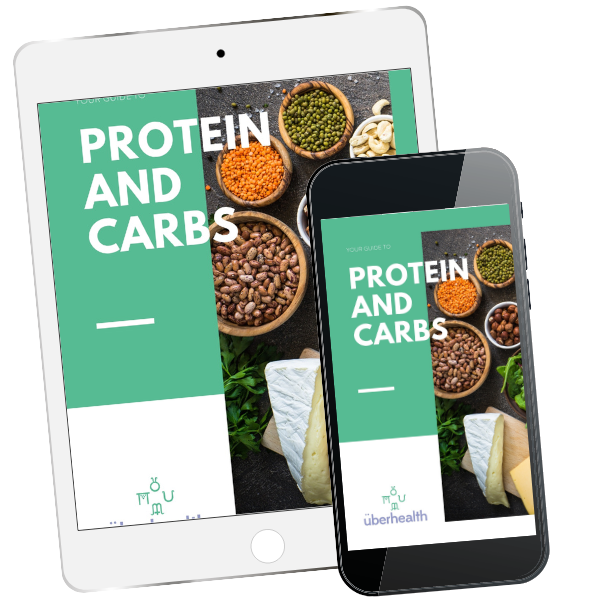Intermittent Fasting and Time-Restricted Eating: Can Active People Benefit, or Does It Backfire?

Intermittent fasting (IF) and time-restricted eating (TRE) have exploded in popularity. From weight loss to improved metabolic health, the promises sound enticing. But what happens when you add training and performance goals into the mix?
For endurance athletes, strength trainers, and recreationally active people, fasting isn’t just about skipping meals, it can influence energy availability, recovery, and hormone balance.
Done well, it can be a useful tool.
Done poorly, it can derail both health and performance.
What Are IF and TRE?
- Intermittent Fasting (IF): Cycles of eating and fasting, ranging from daily patterns (e.g., 16:8 method) to alternate-day or 5:2 approaches.
- Time-Restricted Eating (TRE): A form of IF where eating is limited to a set window (e.g., 8–10 hours) each day, often without caloric restriction.
Both approaches aim to improve metabolic flexibility, reduce total calorie intake, and, in some cases, support fat loss.
5 Potential Benefits for Active Individuals
1. Improved Metabolic Flexibility
Fasting can encourage the body to utilise fat more efficiently as a fuel source, which may help endurance performance at lower intensities.
2. Simplified Meal Planning
Fewer eating occasions can reduce food prep stress, which is helpful for busy athletes managing training, work, and family life.
3. Weight Management
For those struggling with late-night snacking or grazing, TRE can naturally reduce overall calorie intake without rigid calorie counting.
4. Insulin Sensitivity and Blood Sugar Control
Short fasting periods can support stable blood sugar, reducing energy dips and cravings between meals.
5. Digestive Rest
Some athletes report improved gut comfort, especially if experiencing bloating or gastrointestinal distress.
5 Pitfalls and Risks of Fasting in Active Populations
1. Low Energy Availability (LEA)
Skipping meals can lead to underfueling, especially if training volume is high. Over time, this risks RED-S (Relative Energy Deficiency in Sport), hormonal imbalances, and increased injury susceptibility.
2. Compromised Training Quality
High-intensity or long-duration workouts performed fasted can suffer from low glycogen availability, leading to decreased power, slower recovery, and increased perceived effort.
3. Hormonal Disruption
- In women, prolonged fasting can affect menstrual cycles and thyroid function.
- In men, chronic energy deficits may reduce testosterone and impair recovery.
4. Sleep and Recovery Impact
If fasting leads to inadequate evening fuel, athletes may experience disrupted sleep, poor muscle repair, and reduced adaptation to training.
5. Increased Stress Response
Fasting elevates cortisol in some individuals. Combined with training stress, this can contribute to fatigue, anxiety, or overtraining.
When Fasting Strategies Might Support Training
- Off-season or base training phases for when intensity is lower and fat adaptation is the goal.
- Body composition goals where modest energy restriction is desired but not extreme.
- Individuals with metabolic concerns (e.g., prediabetes, insulin resistance) seeking improved glucose regulation.
- Short-term use (4–6 weeks) to break dietary habits (late-night eating, constant snacking).
When Fasting Strategies May Hinder Training and Hormones
- High-intensity or competition phases where glycogen stores are critical.
- Athletes prone to disordered eating or food anxiety as fasting can reinforce restrictive behaviours.
- Females with irregular cycles, amenorrhea, or perimenopause as fasting may exacerbate hormonal imbalances.
- Heavy training loads (>8–10 hrs/week) due to risk of chronic low energy availability.
5 Practical Tips for Active People Exploring IF or TRE
1. Fuel Around Training
Even within a fasting window, prioritise carbs and protein pre- and post-workout. Fast only during lower-intensity or recovery days, not all sessions.
2. Hydration and Electrolytes
Fasting doesn’t mean avoiding fluids. Ensure adequate water, herbal teas, or electrolyte-rich drinks.
3. Nutrient-Dense Meals
Condensed eating windows demand high-quality foods like whole grains, lean proteins, healthy fats, and colourful vegetables.
4. Start Gradually
Move from 12-hour overnight fasts to 14–16 hours, monitoring energy, mood, and performance.
5. Monitor Key Signs
Red flags include fatigue, poor recovery, mood swings, irregular cycles, and declining training metrics.
For Practitioners: Screening and Support
- Assess training load and goals before recommending fasting.
- Screen for LEA/RED-S risk factors, especially in females.
- Educate on fuel timing e.g., “train fed, fast later.”
- Encourage self-monitoring of menstrual cycles, energy levels, and mood.
- Use labs where indicated: ferritin, vitamin D, thyroid, sex hormones, cortisol.
Bottom Line
Fasting can be a tool, not a rule.
For some active individuals, it offers metabolic benefits and simplicity.
For others (especially those training hard) it can increase body stress, reduce performance, and disrupt hormones.
The key is context: timing fasting during lower-intensity phases, maintaining nutrient density, and monitoring for early signs of underfueling.
Want to Learn More About Fueling for Training and Weight Goals?
My Uberhealthy Weight Loss trainings dive deeper into hormones, energy balance, and performance nutrition, helping you achieve weight and health goals without sacrificing training:
- Uberhealthy Weight Loss Strategies – foundational strategies for weight loss and health
- Uberhealthy Weight Loss 2 – advanced approaches to hormones, metabolism, and long-term success
Both trainings are science-based, practical, and designed for active people and practitioners who want sustainable results without compromising their training or health.
FREE RESOURCE


